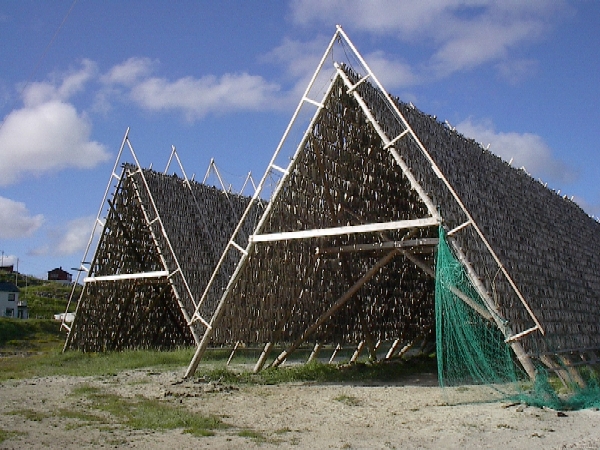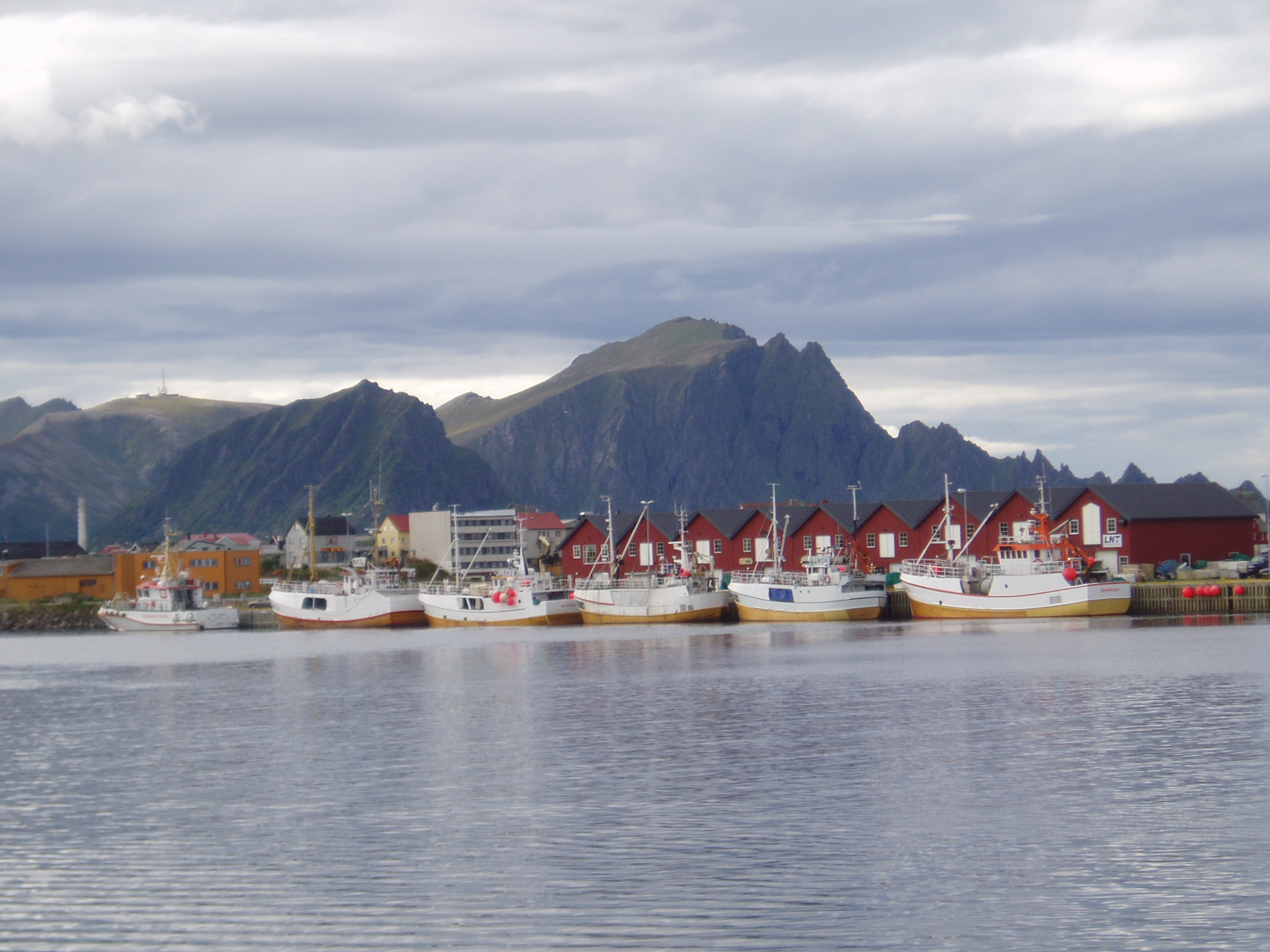|
Hovden, Nordland
Hovden is a fishing village in Bø Municipality in Nordland county, Norway. The village is located at the northern tip of a peninsula on the island of Langøya, on the west side of the Malnesfjorden. The ocean lies to the north and west of the village. The road that goes to Hovden ends at the village. The habitation of Hovden, on the outermost point on a peninsula of the third-largest island in Norway (Langøya) is because of the closeness to the rich fishing banks off of the Vesterålen archipelago. Fish processing and fishing are the main employment of dwellers in Hovden. Archaeological findings show that Hovden have been populated at least since 400 to 800 CE. The southern and western part of Hovden is referred to as "Malnes". Malnes was the clerical center for the northern part of Bø until Malnes Church was moved from Malnes in 1829 to the village of Eidet. The name of the parish is still called Malnes. History Hovden is a part of a line of old fishing communiti ... [...More Info...] [...Related Items...] OR: [Wikipedia] [Google] [Baidu] |
Malnesberget
Malnesberget (Mount Malnes) is a mountain in the municipality of Bø in Nordland county, Norway. The mountain stands on the western side of the large island of Langøya, along the Malnesfjorden, just south of the villages of Hovden and Malnes Malnes is a small settlement in Bø Municipality in Nordland county, Norway. The village is located along the mouth of Malnesfjorden in the northwest part the island of Langøya. Malnes is now considered the southwestern part of the village of ... (hence the name). It can be climbed from the village of Malnes starting about north of Tussen (elevation: ), a smaller hill located along Norwegian County Road 915, just west of Malnesberget. References Hills of Norway Mountains of Nordland Bø, Nordland Mountains under 1000 metres {{Nordland-mountain-stub ... [...More Info...] [...Related Items...] OR: [Wikipedia] [Google] [Baidu] |
Norwegian County Road 915
County Road 915 ( no, Fylkesvei 915) is a road in the municipality of Bø in Nordland County, Norway. The road starts in the village of Rise, where it branches off from County Road 820, and then crosses the low isthmus to the village of Eidet, where County Road 917 branches off north towards the village of Grimstad. It then follows the sea to Sandvika, where it turns inland and runs along the west side of Bufjellet hill () before descending to the village of Nykvåg, where County Road 916 branches off east to Vågen. The road then continues further along the water, past Malnes to the village of Hovden, where it terminates. The road becomes very narrow below Tussen hill () on the border of the Nyke/Tussen Nature Reserve before it reaches Hovden. This stretch of the road is also exposed to rockfalls and was closed by such a rockfall in 2014. References External linksStatens vegvesen – trafikkmeldinger Fv915 (Traffic Information: County Road 915) {{authority control 91 ... [...More Info...] [...Related Items...] OR: [Wikipedia] [Google] [Baidu] |
Bø, Nordland (village)
Bø is a village in Bø Municipality in Nordland county, Norway. The village is located on the southwest shore of the large island of Langøya, looking out towards the small island of Litløya. Norwegian County Road 820 runs through the village. The village of Bø is made up of three smaller villages that have grown together: Vinje, Steine, and Skagan. Bø Church stands just east of the village. The village has a population (2018) of 612, which gives the village a population density Population density (in agriculture: Stock (other), standing stock or plant density) is a measurement of population per unit land area. It is mostly applied to humans, but sometimes to other living organisms too. It is a key geographical ... of and makes it the largest urban area in the municipality. References Villages in Nordland Bø, Nordland Populated places of Arctic Norway {{Nordland-geo-stub ... [...More Info...] [...Related Items...] OR: [Wikipedia] [Google] [Baidu] |
Andenes
is the administrative centre of Andøy Municipality which is located in the Vesterålen district of Nordland county, Norway. The village of Andenes is the northernmost settlement of the island of Andøya (and in Nordland county). To the east is the island of Senja (in Troms county), and to the west the endless horizon of the North Atlantic Ocean. Andenes Lighthouse sits along the harbor and can be seen for long distances. Andøya Airport, Andenes is located just south of the village, off of Norwegian County Road 82. The village has a population (2018) of 2,694 which gives the village a population density of . History Andenes was already an important fishing village during the Iron Age. By the early 1900s, it had become one of the largest fishing ports in Norway. The municipality of Andenes was established on 1 January 1924 when it was separated from Dverberg municipality. Initially, Andenes had 2,213 residents. On 1 January 1964, Andenes was merged with Dverber ... [...More Info...] [...Related Items...] OR: [Wikipedia] [Google] [Baidu] |
Eide, Bø
Eidet or Eide is a village in Bø Municipality in Nordland county, Norway. The village is located on the large island of Langøya in the Vesterålen archipelago. The village is located about northeast of the municipal centre of Straume. Malnes Church was moved here from the small village of Malnes, just south of the village of Hovden in 1829. Eide is connected to the village of Nykvåg to the north and to the village of Rise to the south by Norwegian County Road 915 County Road 915 ( no, Fylkesvei 915) is a road in the municipality of Bø in Nordland County, Norway. The road starts in the village of Rise, where it branches off from County Road 820, and then crosses the low isthmus to the village of Eid .... References Bø, Nordland Villages in Nordland {{Nordland-geo-stub ... [...More Info...] [...Related Items...] OR: [Wikipedia] [Google] [Baidu] |
Malnes Church
Malnes Church ( no, Malnes kirke) is a parish church of the Church of Norway in Bø Municipality in Nordland county, Norway. It is located in the village of Eide. It is one of the churches for the ''Bø og Malnes'' parish which is part of the Vesterålen prosti (deanery) in the Diocese of Sør-Hålogaland. The white, wooden church was built in a long church style in 1895 using plans drawn up by the architect Ole Scheistrøen. The church seats about 320 people. History The earliest existing historical records of the church date back to the year 1589, but the church was likely founded in the early 1500s. The first church at Malnes, near the village of Hovden. Around the year 1700, a new church building was constructed. It was likely a rectangular log building without a tower. In 1814, this church served as an election church ( no, valgkirke). Together with more than 300 other parish churches across Norway, it was a polling station for elections to the 1814 Norwegian Constituent A ... [...More Info...] [...Related Items...] OR: [Wikipedia] [Google] [Baidu] |
Malnes
Malnes is a small settlement in Bø Municipality in Nordland county, Norway. The village is located along the mouth of Malnesfjorden in the northwest part the island of Langøya. Malnes is now considered the southwestern part of the village of Hovden, but it was formerly a separate farming settlement. Geography The hill Malnesberget () rises south of Malnes. Norwegian County Road 915 connects Malnes to Hovden in the north and to the village of Nykvåg to the southwest. History Malnes Church was established at Malnes in the Middle Ages In the history of Europe, the Middle Ages or medieval period lasted approximately from the late 5th to the late 15th centuries, similar to the post-classical period of global history. It began with the fall of the Western Roman Empire ..., and Malnes served as the clerical center of the former parish of Malnes in the Bø ecclesiastical district (''Bø herred''). In 1829, Malnes Church was moved from Malnes to the village of Ei ... [...More Info...] [...Related Items...] OR: [Wikipedia] [Google] [Baidu] |
Common Era
Common Era (CE) and Before the Common Era (BCE) are year notations for the Gregorian calendar (and its predecessor, the Julian calendar), the world's most widely used calendar era. Common Era and Before the Common Era are alternatives to the original Anno Domini (AD) and Before Christ (BC) notations used for the same calendar era. The two notation systems are numerically equivalent: " CE" and "AD " each describe the current year; "400 BCE" and "400 BC" are the same year. The expression traces back to 1615, when it first appeared in a book by Johannes Kepler as the la, annus aerae nostrae vulgaris (), and to 1635 in English as "Vulgar Era". The term "Common Era" can be found in English as early as 1708, and became more widely used in the mid-19th century by Jewish religious scholars. Since the later 20th century, BCE and CE have become popular in academic and scientific publications because BCE and CE are religiously neutral terms. They are used by others who wish to be sens ... [...More Info...] [...Related Items...] OR: [Wikipedia] [Google] [Baidu] |
Kunnskapsforlaget
Kunnskapsforlaget () is a Norwegian publishing company based in Oslo. Kunnskapsforlaget was established in 1975, as a partnership between H. Aschehoug & Co. (W. Nygaard) and Gyldendal Norsk Forlag. The purpose was to co-operate on publishing encyclopaedias and dictionaries. The first volume of Store norske leksikon The ''Great Norwegian Encyclopedia'' ( no, Store Norske Leksikon, abbreviated ''SNL''), is a Norwegian-language online encyclopedia. The online encyclopedia is among the most-read Norwegian published sites, with more than two million unique vis ... (SNL) was published in 1978. A total of four editions was published (the last one in 2004), before the online version was transferred to Institusjonen Fritt Ord og Sparebankstiftelsen DnB in 2011. Kunnskapsforlaget is the largest dictionary publisher in Norway. They publish both printed books, and digital dictionaries that are available through the online service Ordnett (launched in 2004). Their main languages a ... [...More Info...] [...Related Items...] OR: [Wikipedia] [Google] [Baidu] |
Store Norske Leksikon
The ''Great Norwegian Encyclopedia'' ( no, Store Norske Leksikon, abbreviated ''SNL''), is a Norwegian-language online encyclopedia. The online encyclopedia is among the most-read Norwegian published sites, with more than two million unique visitors per month. Paper editions 1978–2007 The ''SNL'' was created in 1978, when the two publishing houses Aschehoug and Gyldendal merged their encyclopedias and created the company Kunnskapsforlaget. Up until 1978 the two publishing houses of Aschehoug and Gyldendal, Norway's two largest, had published ' and ', respectively. The respective first editions were published in 1907–1913 (Aschehoug) and 1933–1934 (Gyldendal). The slump in sales for paper-based encyclopedias around the turn of the 21st century hit Kunnskapsforlaget hard, but a fourth edition of the paper encyclopedia was secured by a grant of ten million Norwegian kroner from the foundation Fritt Ord in 2003. The fourth edition consisted of 16 volumes, a ... [...More Info...] [...Related Items...] OR: [Wikipedia] [Google] [Baidu] |
Fishing
Fishing is the activity of trying to catch fish. Fish are often caught as wildlife from the natural environment, but may also be caught from stocked bodies of water such as ponds, canals, park wetlands and reservoirs. Fishing techniques include hand-gathering, spearing, netting, angling, shooting and trapping, as well as more destructive and often illegal techniques such as electrocution, blasting and poisoning. The term fishing broadly includes catching aquatic animals other than fish, such as crustaceans (shrimp/lobsters/ crabs), shellfish, cephalopods (octopus/squid) and echinoderms (starfish/sea urchins). The term is not normally applied to harvesting fish raised in controlled cultivations ( fish farming). Nor is it normally applied to hunting aquatic mammals, where terms like whaling and sealing are used instead. Fishing has been an important part of human culture since hunter-gatherer times, and is one of the few food production activities that ha ... [...More Info...] [...Related Items...] OR: [Wikipedia] [Google] [Baidu] |



